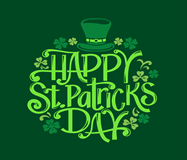
Much of what is known about St. Patrick’s life has been through legends. It is believed that St. Patrick, the patron saint of Ireland, was actually born in Britain. Among the legends associated with St. Patrick is that he stood atop an Irish hillside and banished snakes from Ireland, and all serpents slithered into the sea. In fact, snakes probably never occupied the Emerald Isle in the first place, since there are no signs of snakes in the country’s fossil record.
It was emigrants, mainly to the United States, who changed St. Patrick’s Day into a secular holiday, celebrating all things Irish. Boston held its first St. Patrick’s Day parade in 1737, followed by New York City in 1762. Since 1962, Chicago has colored the Chicago River green to mark the holiday.
There are many traditions associated with St. Patrick’s Day. Most participate in the “wearing of the green”, sporting green clothing, or a shamrock, a sacred plant that has been associated with Ireland for centuries. Corned beef and cabbage are often eaten on the holiday, and even beer is sometimes dyed green to celebrate the day. The red-haired, green-clothed Leprechaun is commonly associated with St. Patrick’s Day. Belief in leprechauns stems from the Celtic belief in fairies and leprechauns were thought to be responsible for mending the shoes of the other fairies.
Although the holiday originally started as a Christian feast day celebrating the life of St. Patrick, today it is a day of parties and a celebration of all things Irish. Don’t forget to wear green!

